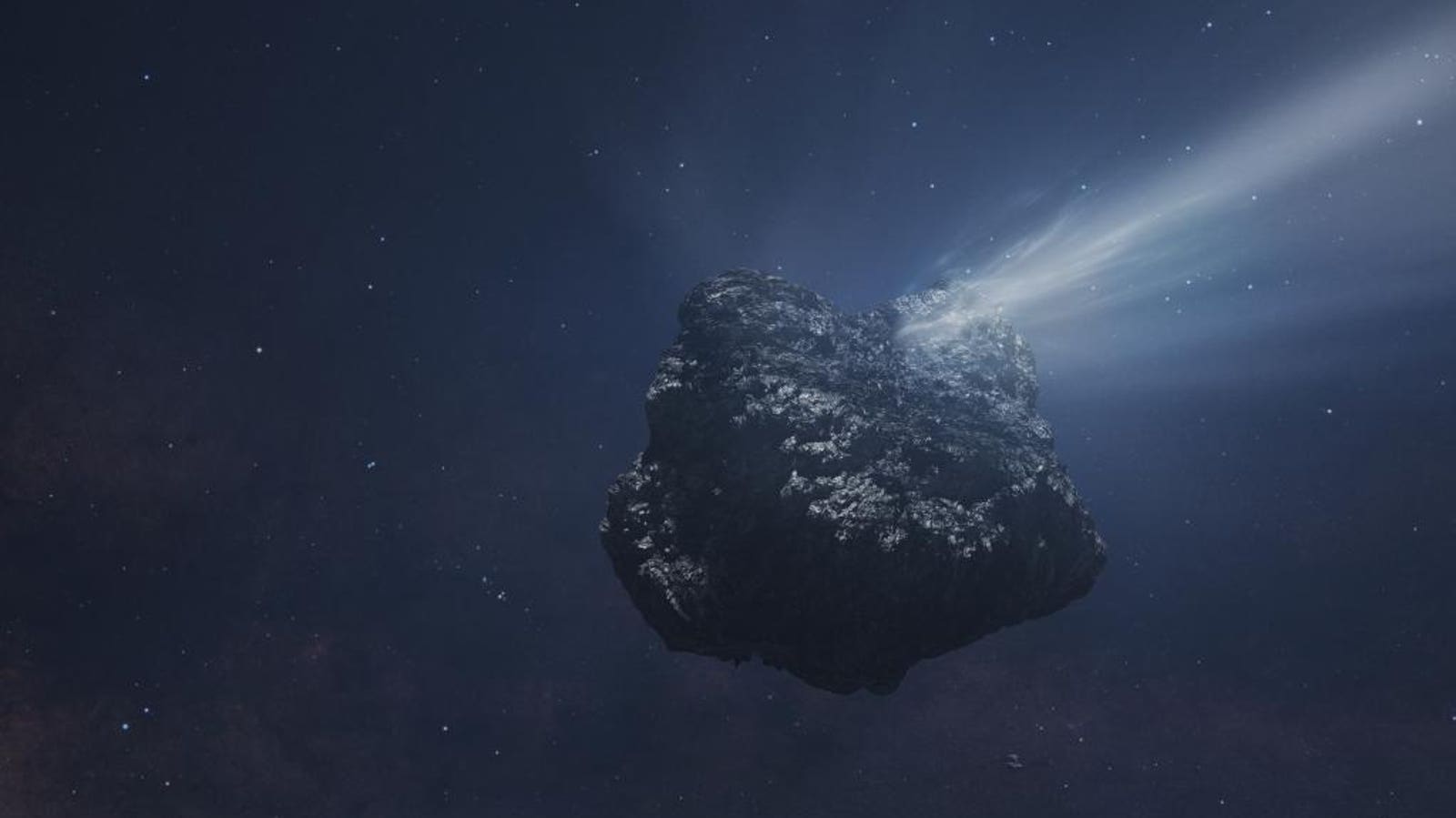Topline
The largest comet ever found has jets of carbon monoxide gas erupting from its 85-mile (140-kilometer) wide nucleus. Comet Bernardinelli-Bernstein (C/2014 UN271) was studied while it was more than halfway to Neptune using a radio telescope array in Chile’s Atacama desert. It will enter the inner solar system in 2031, but it won’t come as close to the sun as Earth.
An artist rendition of comet C/2014 UN271, the largest known comet in the Oort Cloud.
Key Facts
Using the powerful Atacama Large Millimeter/submillimeter Array radio telescope in Chile, researchers observed comet Bernardinelli-Bernstein while it was more than halfway to Neptune, at a distance of 16.6 times the distance between the sun and Earth.
In a major milestone in the study of distant solar system objects, observations by astronomers in March 2024 uncovered molecular activity in the comet in the form of jets of carbon monoxide gas erupting from its nucleus. It’s the first detection of carbon monoxide outgassing in a comet at such a great distance.
Comet Bernardinelli-Bernstein is more than 10 times the size of most known comets, so large that it’s classified as a “minor planet.” It’s thought to orbit the sun only once every 600,000 years, with its next closest approach in 2031.
The comet was discovered by astronomers Dr. Pedro Bernardinelli and Gary Bernstein on June 19, 2021, using archival data from the Dark Energy Survey.
What’s Happening To Comet Bernardinelli-Bernstein
Comet Bernardinelli-Bernstein is doing something unexpected. A comet’s nucleus is a solid core of rock and ice. When a comet gets close to the sun, its nucleus heats up, and the ice vaporizes to form its glowing coma (head) and tail. The new observations, in a paper published in The Astrophysical Journal Letters, reveal complex and evolving jets of carbon monoxide gas erupting from the comet Bernardinelli-Bernstein’s nucleus. The jets were seen on the sun-facing side of the comet, suggesting that carbon dioxide — not ice — is the volatile compound when a comet is so far from the sun. It’s the first direct evidence of what drives a comet’s activity when it’s so cold and distant.
This sequence from the Hubble Space Telescope in 2022 shows how the nucleus of Comet C/2014 UN271 … More
‘explosive Outgassing’
“These measurements give us a look at how this enormous, icy world works,” said lead author Nathan Roth of American University and NASA Goddard Space Flight Center. “We’re seeing explosive outgassing patterns that raise new questions about how this comet will evolve as it continues its journey toward the inner solar system.” Outgassing — the release of frozen gases — is expected to continue, with astronomers expecting to see jets of other frozen gases, notably methane and formaldehyde, as comet Bernardinelli-Bernstein gets closer to the sun over the next few years.
This diagram compares the size of the icy, solid nucleus of comet C/2014 UN271 … More
Largest Comet Ever Found
Comet Bernardinelli-Bernstein is the largest comet ever observed from the Oort Cloud, which NASA describes as being like a big, thick bubble around the solar system. The Oort Cloud lies far beyond Pluto and is home to millions of comets. However, it’s not quite the largest comet ever found. That title goes to comet Sarabat (C/1729), the so-called “Great Comet of 1729,” which was visible to the naked eye.
Further Reading








